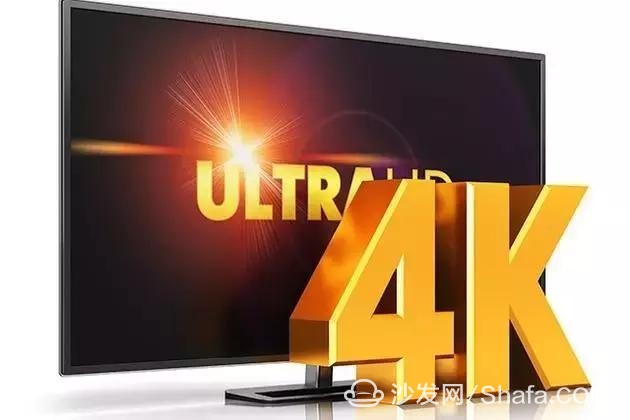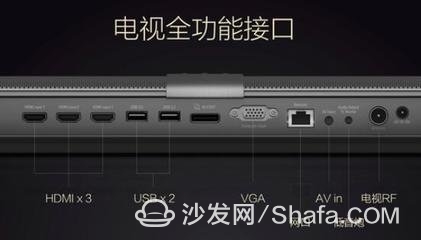In the era of CRT, the most important role of television was to watch cable television. When users used TVs, they were restricted by the broadcast time of TV stations. They could not watch TV shows or television programs they wanted to watch as they wished. The TV interface that comes with CRT TV usually has only RF RF input interface, that is, cable TV interface. In addition, AV interface connects VCD or DVD. Newer TV sets will be equipped with color difference component interface. With the advent of flat-panel TVs, the improvement of TV motherboards has brought more use methods to televisions. The change is the increase of interfaces. The addition of interfaces has made the TV a screen, a screen that can connect Blu-ray players, computers, and game consoles. TV can not only see but also play. 






Smart TV/box information can focus on smart TV information network sofa butler (http://), China's influential TV box and smart TV website, providing information, communication, TV boxes, smart TVs, smart TV software, etc. Answering questions.
CRT era

The CRT era is limited by the definition of television. During the period, there are fewer TV interfaces and the functions are relatively simple. The most common is the RF RF input interface. The RF RF input interface is generally called "cable television interface". As its name suggests, it is an interface for connecting cable television lines to receive signals from various television stations. It is also used to connect video recorders. It is still one of the main interfaces of the TV.
Next is the AV interface. The AV interface connects video, DVD, and other non-high-definition playback devices through red, white, and yellow three-color interfaces to output video and audio. The AV interface is currently the interface most familiar to consumers. To this day, most consumers still use it to connect set-top boxes. The CRT era is the main interface for connecting home hosts such as red and white machines and bully.
In addition to the above two interfaces, there is also a poorly-differentiated color difference component interface. In the CRT era, the resolution of the video that the color difference component interface can transmit can reach 1080i, which exceeds the limit of the CRT TV and is therefore not popular with consumers. In the era of flat-panel televisions, the resolution of televisions has been greatly improved, and the interface of color difference components seems to attract a period of great effort. However, because the interface of color difference components needs to be transmitted through five cables, it is only necessary to use one cable to be more advanced. The replacement of audio and video by HDMI has become the shortest-lived TV interface.

HDTV era
In the era of flat-panel televisions and smart TVs, people are increasingly pursuing resolution, and 2K and 4K have emerged. With the increase of television resolution, the transmission capability of the TV interface has also been correspondingly improved, and thus become a screen for consumers to connect computers and home game consoles. The most common connection method is VGA and HDMI.

VGA is the most common interface on computers, and most computers are still equipped. Like the interface in the CRT era, the VGA transmits analog signals, and at the same time as the color difference component interface, it can transmit 1920-1080 resolution video. Therefore, it is the most mainstream interface currently used in desktop computers and notebooks, but it is also connected to a color difference component. Differently, VGA cannot transmit audio signals. With the increase in demand for 4K resolution, VGA will slowly be eliminated by the market. Instead, it is the HDMI interface.

HDMI can be said to be one of the most perfect interfaces. HDMI stands for High Definition Multimedia Interface, which means high-definition multimedia interface. Different from VGA and other analog signals, HDMI uses digital transmission. The loss caused by the transmission process is very small, and it is not affected by external interference. Therefore, it can be Lossless transmission of video and audio signals. More importantly, HDMI can transmit 4K resolution and 7.1-channel video. In addition, HDMI can also cooperate with HDCP, that is, bandwidth digital content protection technology to prevent digital products from being copied illegally, thus becoming the mainstream connection method for Blu-ray players and home game consoles. It is worth noting that on November 29, 2017, the HDMI Forum introduced a new HDMI 2.1 standard, HDMI 2.1 supports higher resolution and refresh rate transmission such as 8K/60Hz, 4K/120Hz, and the highest supported resolution Up to 10K and support for dynamic HDR, while the transmission bandwidth is also increased to 48Gbps.
Of course, there are not only the above interfaces on the TV, but also common interfaces such as USB2.0, USB3.0, and network ports. There are also some invisible "interfaces" that are wireless transmissions including Bluetooth and WI-FI.

Bluetooth is a short-range wireless communication technology. It was developed by Ericsson in 1994 and named after the Danish king's nickname “Harold Bluetoothâ€. It aims to achieve networking of different devices in the consumer and work fields, and established a personal area network. For the goal, it is a one-to-one wireless transmission technology. In the early years, the Bluetooth transmission distance was limited, and transmission could not be performed beyond 10 meters. The Bluetooth 5.0 standard announced by the Bluetooth Technology Alliance in 2016 can extend the Bluetooth signal transmission distance to 300 meters and can cover an apartment or even a building. Small building. At the same time equipped with a faster transmission speed, the transmission limit of 24Mbps, can also be achieved with WI-FI accuracy of less than 1 meter indoor auxiliary positioning. However, the compression of audio signals by Bluetooth is still not optimized, and Bluetooth headsets are still unreliable for users who value quality.

The wireless projection screen is actually a streaming media transmission technology. Based on the WI-FI, the local area network is built and the transmission between the device terminals is completed through the local area network. The wireless projection transmission can be divided into a sending module and an accepting module. At the sending end, the video is compressed and transmitted to the display through the WI-FI, and the display end decompresses the video to form an image. Through wireless projection technology, the screen of a mobile phone or other electronic device can be mapped onto a television screen.

The increase in the number of TV's interfaces allows us to use TVs with more games that seem to be convenient for consumers. However, the increasing number of interfaces will undoubtedly increase the cost of learning for consumers. How to unify the functions of the TV interface may become the development direction of the next-generation TV interface.
Smart TV/box information can focus on smart TV information network sofa butler (http://), China's influential TV box and smart TV website, providing information, communication, TV boxes, smart TVs, smart TV software, etc. Answering questions.
Spinner Rotary Joint,Fiber Optic Rotary Joint,Rotary Union,Coaxial Rotary Joint
Dongguan Oubaibo Technology Co., Ltd. , https://www.sliprobs.com
